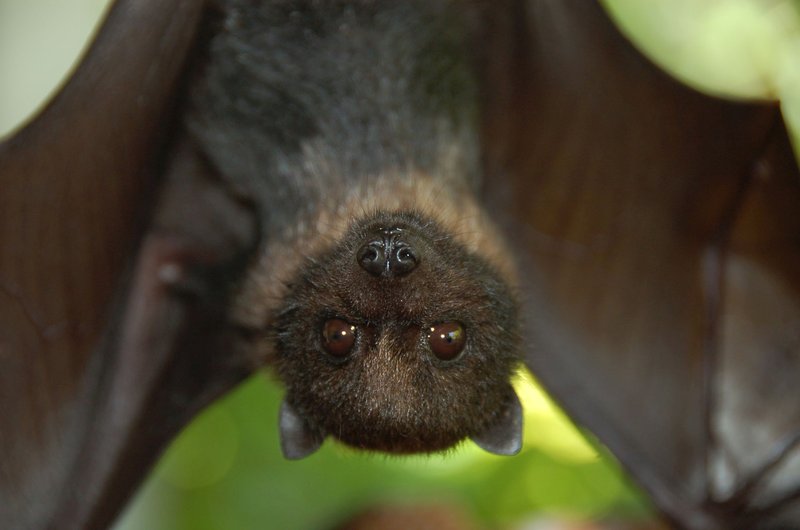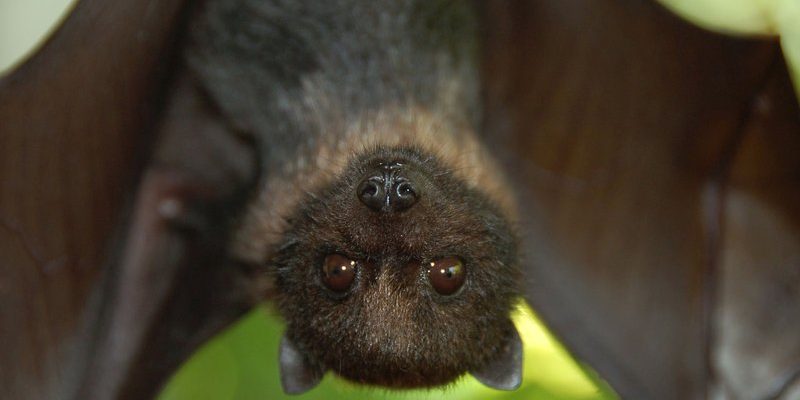
Fruit bats, also known as flying foxes, belong to the Pteropodidae family. Despite their often intimidating appearance, they’re gentle giants. They mainly feast on fruits, nectar, and flowers, playing a vital role in the ecosystem by aiding in pollination and seed dispersal. As we dive into their parenting techniques, you might find yourself appreciating these creatures even more, understanding that their motherly instincts are just as strong as those of any other animal.
The Maternity Roost: Where Motherhood Begins
One of the first things you’ll notice about fruit bats is their distinctive maternity roosts. These are places where pregnant females gather to give birth and raise their young, much like a cozy nursery. You might think of it as a support group for new moms in the wild.
In these roosting sites, mother bats hang from branches in colonies that can consist of hundreds or even thousands of individuals. This communal environment offers safety from predators and a ready supply of food from the surrounding trees. The warmth and company of other mothers help create a nurturing atmosphere. As you can imagine, it’s vital for the young bats, called pups, to have this social support while growing up.
Maternity roosts are often located in places rich in food sources. This means that as the pups grow, they’ll have access to the fruits their mothers consume. Having a roost near a reliable food supply ensures that mothers can quickly return after foraging and provide nourishment to their young.
The Birth Process: A Leap Into Life
When it comes to the actual birth, fruit bat mothers are quite remarkable. Most species give birth to a single pup after a gestation period of about five to six months. You might be wondering how this process unfolds. As the time approaches, the mother will often spend more time in her roost, preparing for the big day.
During birth, the mother bat hangs upside down from a branch. This may seem strange, but it’s quite handy for her. The pup typically slips out, and the mother instinctively catches it with her feet. Isn’t that incredible? Right after birth, the mother will lick her pup clean and use her wings to create a cozy environment, keeping the little one snug and warm.
The bond formed during this experience is incredibly strong. The mother will groom and care for her pup, ensuring it’s safe and comfortable as it begins its journey into the world.
Nourishing the Young: A Mother’s Care
Once the pup has arrived, the mother’s job is far from over. In fact, it’s just the beginning! Fruit bat pups are born blind and helpless, relying entirely on their mothers for survival. The mothers nurse their young for about 4 to 6 months, providing milk that’s rich in nutrients.
You might imagine them sitting together at a cozy café (if bats had such places), with the mother feeding her pup while keeping a watchful eye on their surroundings. Since fruit bats are social creatures, mothers often keep their pups close during foraging trips, hanging from branches while the little ones cling to their bellies.
During this nursing period, the relationship deepens. Pups emit squeaks and cries that help their mothers locate them among the many hanging bats. These vocalizations are essential, especially in busy roosts, where the sound of flapping wings can be overwhelming. It’s a beautiful dance of communication that helps strengthen their bond.
Learning to Fly: A Rite of Passage
As pups grow, they reach a crucial milestone—learning to fly. This is where the adventure truly begins. Around the age of four to five weeks, the little ones start to stretch their wings, practicing their flapping motions while still clinging to their mothers. It’s a heartwarming sight, like a toddler taking those first wobbly steps.
Mothers play a critical role in this process. They encourage their pups to explore the surrounding area and even lead them on short “practice flights.” During these outings, pups learn not just how to fly, but also how to navigate through trees, avoid obstacles, and find food. It’s a learning curve that mirrors many other species in the wild, where young animals must acquire skills to survive.
By the time the pups are around two to three months old, they are usually able to fly solo. However, the learning doesn’t stop there. Young fruit bats continue to shadow their mothers, picking up tricks and tips on where to find the best fruits and nectar.
Leaving the Nest: Independence and Survival
Eventually, the time comes for the pups to leave the roost and fend for themselves. This transition can be bittersweet for both mother and child. While the young bats are equipped with essential skills, the wild can still be a dangerous place with potential predators lurking around.
Before fully separating, mothers will often stay nearby, making sure their youngsters feel safe and secure as they navigate the world on their own. This support gives pups the confidence they need to thrive in their new independence, similar to how we might cheer on a friend starting a new chapter in life.
After several months, the pups will become fully independent and join a new colony or remain with their mothers, eventually becoming contributing members of the community. It’s a cycle of life that continues as new generations of fruit bats are born and raised in the wild.
Challenges of Raising Young in the Wild
Raising young fruit bats isn’t without its challenges. Like many wildlife species, fruit bats face threats from habitat loss and climate change, making it harder for mothers to find suitable roosting sites and food sources. Deforestation can lead to less access to the fruits that are essential for their diets and, consequently, for their pups’ growth.
Additionally, they must contend with natural predators, like owls and snakes, especially in the early stages when the pups are most vulnerable. Here’s the thing: even though these bats have strong instincts and communal support, external factors can make thriving in the wild a daunting task. Educating ourselves about their struggles and conservation efforts is crucial in helping these beautiful creatures continue their incredible life cycles.
In the end, fruit bats are nothing short of amazing when it comes to raising their young. From nurturing maternity roosts to their unique birthing process, these bats display a caring and intricate approach to parenting that’s fascinating to observe. Their journey from helpless pups to independent flyers is a testament to the beauty of nature and the bond between mother and child.
So, next time you hear about fruit bats, remember the effort and love that goes into raising their young. These creatures are more than just flying mammals; they’re remarkable parents navigating the challenges of life in the wild. Understanding their ways not only enriches our knowledge but also inspires us to appreciate the delicate balance of ecosystems they help maintain.

